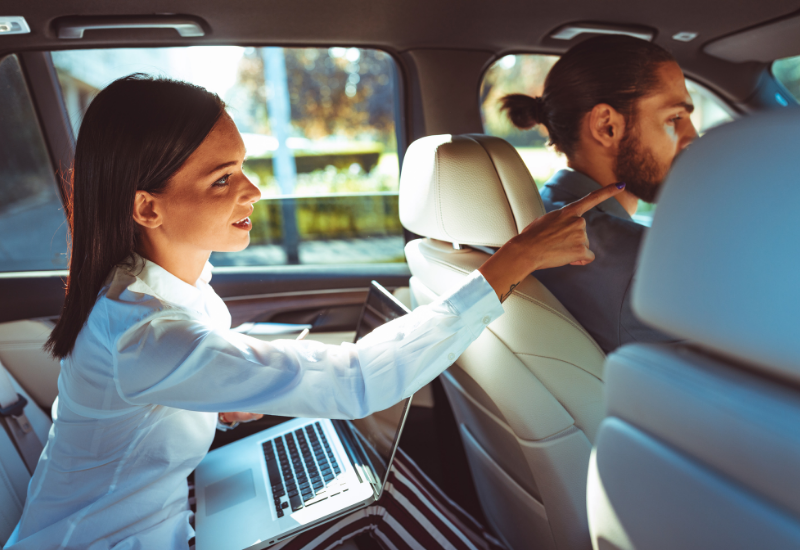10 Taxi Safety for Travelers – CoverTrip
1 February 2013

Anytime you enter a taxi or other type of ride-share vehicle – anything driven by someone else – you surrender a little control to that driver. Often that person is completely unknown to you, and you may be wondering:
- Is it safe to get a taxi alone?
- Where should you sit in the taxi or ride-share vehicle?
- Are taxis safe at night?
On the other hand, many taxi and ride-share drivers are terrific sources of information about local customs, current events, best restaurants and entertainment, and more. Taxi drivers are often experts on safe and unsafe neighborhoods and what threats may lurk at your hotel or destination. Why wouldn’t you rely on their insight?
Many cab drivers are also great to talk with and an excellent opportunity to practice your language skills. Still, be cautious with over-sharing because they may pass the information on to someone else who does not have your best interests at heart.
How do you stay safe in a taxi? Take a look at these taxi safety travel tips from the experts.
1. Ask ahead for the typical price and tipping range
Hotel staff or your host can tell you the typical price range to your destination and the appropriate amount to tip. Having a good idea of what you should have to pay – and confirming the price with the driver ahead of time can mean less hassle when it’s time to pay the bill.
Many dispatchers can also tell you the price, so get a quote ahead of time if you can.
2. Call for a taxi instead of hailing one
Some independent taxi drivers work in partnership with thieves. The scam goes like this: the driver spots something valuable on your person (jewelry, a camera, a mobile device) and they text the thief with the route. Because the thief knows the taxi and the route, they only have to wait at a stoplight to open the door and snatch what’s yours.

Ask for the cab number when you speak with the dispatcher so you can be certain you’re getting in the right vehicle. Make sure the taxi number, or at least the company’s name and phone number, is visible on the vehicle before you attempt to get in.
See the list of essential apps every traveler needs.
3. Never take a taxi alone if you’re drunk
If you’ve had too much to drink, it may seem like the right decision to get a cab – and it is, with someone else. If you’re drunk, the ride in the cab may put you to sleep. The drink may also put you into a semi-conscious state – not the best circumstance to defend yourself from the driver, a partner the driver called, or anyone else who wants to harm you. Riders have been raped, beaten, robbed, and even killed after getting into a taxi when they’re helplessly drunk.
If you’re drunk and need a ride, take a non drunk buddy along with you and stay awake during the ride.
Tip: being drunk while traveling is on the 7 deadly travel sins.
4. Look for a meter, a radio, a badge, and a door handle
All genuine licensed taxi and minicab drivers’ vehicles are equipped with a meter (for determining the charge) and a radio (for taking calls from the dispatcher). In nearly all countries, the taxi driver is required to carry and display their ID badge in the vehicle. If you don’t see a badge or a radio, do not get into the vehicle.
Always check that there’s an interior door handle that works before you settle in too. Some regions are notorious for kidnapping travelers this way.
5. Sit in the backseat – not in the passenger seat
In the backseat, you’re less visible to the driver and to passersby as well. If you’re traveling solo, sitting in the middle puts you farther out of reach too. The less accessible you are, the less likely you’ll be targeted.
Get car sick easily? Take a motion sickness pill from your travel medical kit instead.
Traveling alone? See these 11 important safety tips for solo travelers.
6. Keep expensive items hidden and keep your things close
You may think very little of the cost related to some of your mobile devices, but in a developing country a smartphone is easy to grab and even easier to sell.
If you’re working a mobile device while waiting for the taxi or at a stoplight, you may think you’re being efficient, but you’re also flashing a target for potential thieves. All a thief needs is 20 seconds at the next stoplight to reach in and take it.
Store your mobile devices and cameras in your bags and zip them up (the one exception is your phone – keep that close). Then, keep your purse, backpack, or other bags close to you – preferably on the floor between your feet where they’re hard to see and even harder to reach.
You can even place your leg through the longer straps. Just remember to untangle before you try to exit the taxi!
7. Know where you’re going ahead of time
Have an idea where you’re going ahead of time, and approximately how long it will take to get there. You can easily look this up online or on your smartphone, but be realistic about your knowledge of the area. While the taxi driver may know a better route or one that avoids toll booths, if you’re headed the wrong way entirely feel free to get out at the first opportunity.

If you decide to abandon the taxi, toss money into the front seat (in case you’re mistaken) and all will be well. The taxi driver isn’t going to chase you down.
Tip: See the list of tips for traveling in dangerous places.
8. Ride with the windows closed, or nearly so, and your phone handy
Thieves are always looking for easy targets, so with a little effort, you can make yourself a less easy target and they’ll move on to someone else. Keeping the window rolled up seems like a small thing to do, but from a thief’s point of view, every stop along the way is an opportunity to reach in, open even a locked door, and take things from you.
The downside is the lack of fresh air, but in some cities that’s not a downside. You can always roll the window down a little more when you’re perhaps on the highway and away from the stoplights.
9. Know your local currency
In some countries, the currency changes and unscrupulous drivers may return your change in discontinued or worthless bills. Know enough about the local currency to identify the bills and coins you should use for payment.
If you aren’t sure, check with a local (your host, or a hotel concierge can help you) before you enter the cab.
10. Know who to call in an emergency
If you’re in a foreign country, now the local equivalent of dialing 911 – this is why it’s good to keep your phone out of sight but handy.
Oh, and one more thing … never enter a taxi with someone else in the passenger seat. No matter what the reason they’re there, it can mean no good for you and it’s commonly a way that travelers get robbed, kidnapped, raped, and murdered.
Damian Tysdal is the founder of CoverTrip, and is a licensed agent for travel insurance (MA 1883287). He believes travel insurance should be easier to understand, and started the first travel insurance blog in 2006.
